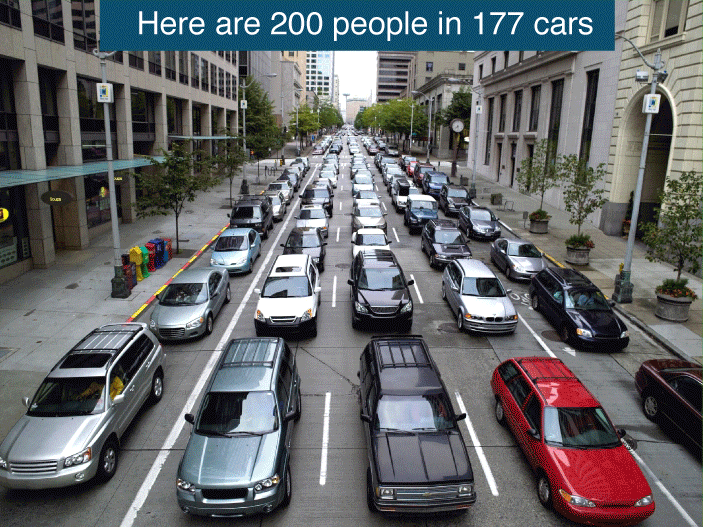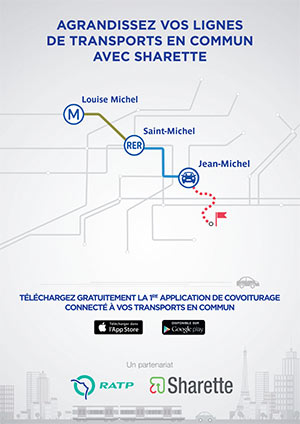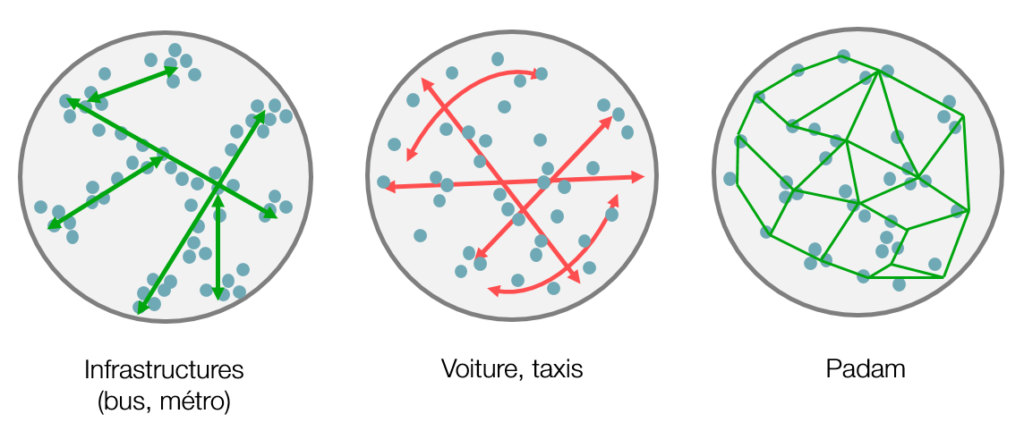As the COP21, the United Nations Climate Change Conference will be held in a few months in Le Bourget with representatives from 62 countries, we wish to share our thoughts about the role of the car in our cities and its complementarity with public transport.
Transport at the very heart of the COP21’s challenges
You will surely not learn anything new if I tell you that one of the main causes of global warming is the greenhouse gases emission, starting with CO2. All sectors are concerned (agriculture, industry, etc.), but also households and the consumption of goods, the use of electrical devices or their daily travel.
In order to reduce greenhouse gas emissions, which began several years ago, transport is of course the first to be targeted, as it currently remains the leading greenhouse gas emitting sector according to figures provided by the Ministry of Ecology, Sustainable Development and Energy, despite a decrease by 8 of the emissions since 2004[1]. Transport is thus responsible for 27.8% of national emissions, with firstly road transport (92% of greenhouse gas emissions, including 57% for private vehicles).

With a tiny calculation we deduce that private cars alone are responsible for nearly 16% of France’s greenhouse gas emissions. Of course, efforts have been made in recent years to reduce emissions: vehicles that consume and pollute less, scrapping incentives to encourage the renewal of the French car fleet, tax credits linked to the purchase of hybrid or electric cars, incentives to carpool, etc.
Although these measures obviously contribute to reduce the carbon footprint of individual travel, they are nevertheless based on the use of the car, a personal vehicle that can carry up to 7 people, but that often remains occupied by one or two passengers maximum, especially over short distances. A private car on a home to work journey is thus occupied on average by only 1.1 passengers in Paris area[2], a sign that carpooling is far from being a general rule. A paradox when you know that three buses or a tramway could carry the same number of passengers as 177 cars, as illustrated below:

The idea here is not to denigrate or demonize the car, but to ask ourselves an essential question: why, despite the many existing and often less polluting alternatives (public transport, train, bicycle, etc.), is the car still the favourite transport way, even in urban areas over short distances? When you look at the condition of the ring road of any major French city at peak times, it is legitimate to wonder why so many people prefer cars to public transport.
Public transport: Car, car, my dear car…
First, there is a strong argument in favour of the car: it has a positive image in our society, being generally associated with driving pleasure and freedom rather than CO2 emissions, in the drivers’ mind. French consumers remain very attached to their cars and the positive concepts associated with driving. Aesthetics, speed, well-being, freedom… You only have to look at any car ad to realize that it’s always the same images that come back. The car is thus represented in advertising as a vehicle that drives in huge spaces in or a city totally emptied of its vehicles and its inhabitants. An image totally out of step with the reality of driving and the time spent daily in traffic jams.
This mismatch between advertising and the actual use of a car is very well summed up by Olivier Razemon on his blog [3]: “Nothing is less like everyday urban traffic than a car commercial.”
A second element darkens the idyllic picture presented in the advertisements: the cost of a particular vehicle on a daily basis, between purchase, gas, parking and repairs, the score is rather salty and averages 3300€ per vehicle per year in 2014[ 4].
Of course, it is undeniable that the aesthetics and performance of a car are taken into account when buying a car. The model and characteristics chosen when buying a car allows its owner to have a certain image of himself. However, these arguments alone are inadequate to explain why many french people still prefer their vehicles over public transport. The main argument that could explain the success of the car is, in my opinion, the comfort. Between a noisy sometimes worn out, and often crowded public transport and a car certainly stuck in traffic, but where we are alone, comfortably sitting, the comparison is quickly made . Efforts have been made to improve the comfort of transit users, but for the moment, they remain well below what the car can offer.
Houston, we lost the connection !
The second factor that could explain the car’s success is more practical. Not only does the car avoid connections, but also load breaks during door-to-door trips. The question of intermodality is at stake here: it remains difficult indeed to articulate the use of the car and public transport. Most often this intermodality is done via car parks or relay parks located on the outskirts of cities, right next to public transport lines (metro, tram, trains etc). The problem is that the car parks are quickly saturated since each passenger drives there individually. As a result: anarchic parking, traffic jams, complexity to get nearby…
One of the answers to the question of transit-car intermodality is the one provided by Sharette, a startup that seeks to encourage carpooling to or from transit lines. The solution proposed by Sharette was thus integrated into the route search of the RATP application during the RER A outage during the summer of 2015.

Three kilometers on foot, wear out your shoes for good…
The last complaint that could be attributed to public transport is the rigidity of their fixed lines compared to the very great flexibility of the car. Fixed lines are very well adapted to mass transport, but are much less efficient at meeting dispersed demand, in medium-populated urban areas for example. These fixed lines, organized in Ile-de-France following a radial structure and established for sometimes decades, do not allow to meet the demands in suburb areas, which nevertheless represent more than 30% of the IDF travels according to a STIF study [5]. We notice the same issue on province to province travel, a real headache by train or TGV, where you have to go through Paris most of the time. Similarly, fixed transit lines do not respond well to the problem of the last kilometer: being dropped off two or three kilometres from home and being forced to complete the journey on foot or by bicycle is not necessarilythe best for users.
Public transport: Why don’t we change eras?
A large-scale experiment, completely abolishing fixed lines, has been set up in Finland in Helsinki, where public transport lines adapt in real time to the demand of users. The initiative had two main objectives: on one hand, to allow a better intermodality between “classic” and on-demand public transport, on the other hand to significantly reduce the number of cars in the city. The latter were no longer essential if users could find alternative transport at low cost, offering almost the same flexibility as a private car, with less parking problems.

This is also the vision we share at Padam Mobility: the problem of the last kilometer and the optimization of lines according to demand is a fundamental question to be answered in order to better optimize public transport, and therefore resources. natural resources and public funds. The all-car era may be behind us.
PS: In fact, you’ve been tricked, this article finally had nothing to do with watermelons, thank you for being to the end!
Sources:
[1] http://www.developpement-durable.gouv.fr/Part-et-evolution-des-secteurs.html
Ministry of Ecology, Sustainable Development and Energy
[2] http://www.actu-environnement.com/media/pdf/news-22056-covoiturage-cgdd.pdf
Office of the Commissioner General for Sustainable Development: Carpooling for commuting to and from work: what potential?
[3] http://transports.blog.lemonde.fr/2013/07/19/la-pub-parodique-qui-fait-enrager-citroen/
Interconnection is no longer assured, Olivier Razemon’s blog
[5] http://www.stif.org/IMG/pdf/6.rUseaux_TC.pdf
Public transport networks in the Ile de France: structures and performance




